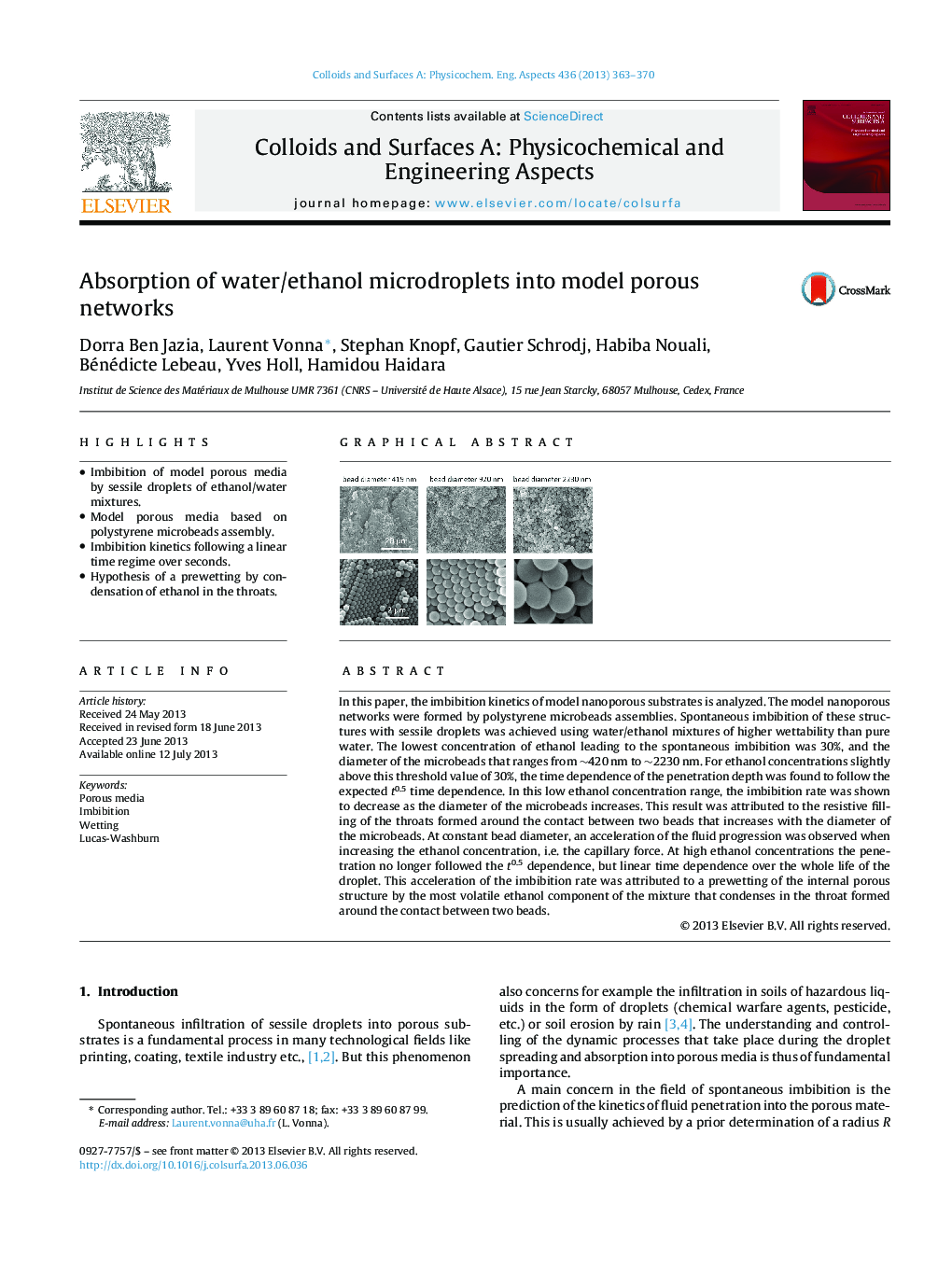| Article ID | Journal | Published Year | Pages | File Type |
|---|---|---|---|---|
| 593364 | Colloids and Surfaces A: Physicochemical and Engineering Aspects | 2013 | 8 Pages |
•Imbibition of model porous media by sessile droplets of ethanol/water mixtures.•Model porous media based on polystyrene microbeads assembly.•Imbibition kinetics following a linear time regime over seconds.•Hypothesis of a prewetting by condensation of ethanol in the throats.
In this paper, the imbibition kinetics of model nanoporous substrates is analyzed. The model nanoporous networks were formed by polystyrene microbeads assemblies. Spontaneous imbibition of these structures with sessile droplets was achieved using water/ethanol mixtures of higher wettability than pure water. The lowest concentration of ethanol leading to the spontaneous imbibition was 30%, and the diameter of the microbeads that ranges from ∼420 nm to ∼2230 nm. For ethanol concentrations slightly above this threshold value of 30%, the time dependence of the penetration depth was found to follow the expected t0.5 time dependence. In this low ethanol concentration range, the imbibition rate was shown to decrease as the diameter of the microbeads increases. This result was attributed to the resistive filling of the throats formed around the contact between two beads that increases with the diameter of the microbeads. At constant bead diameter, an acceleration of the fluid progression was observed when increasing the ethanol concentration, i.e. the capillary force. At high ethanol concentrations the penetration no longer followed the t0.5 dependence, but linear time dependence over the whole life of the droplet. This acceleration of the imbibition rate was attributed to a prewetting of the internal porous structure by the most volatile ethanol component of the mixture that condenses in the throat formed around the contact between two beads.
Graphical abstractFigure optionsDownload full-size imageDownload as PowerPoint slide
